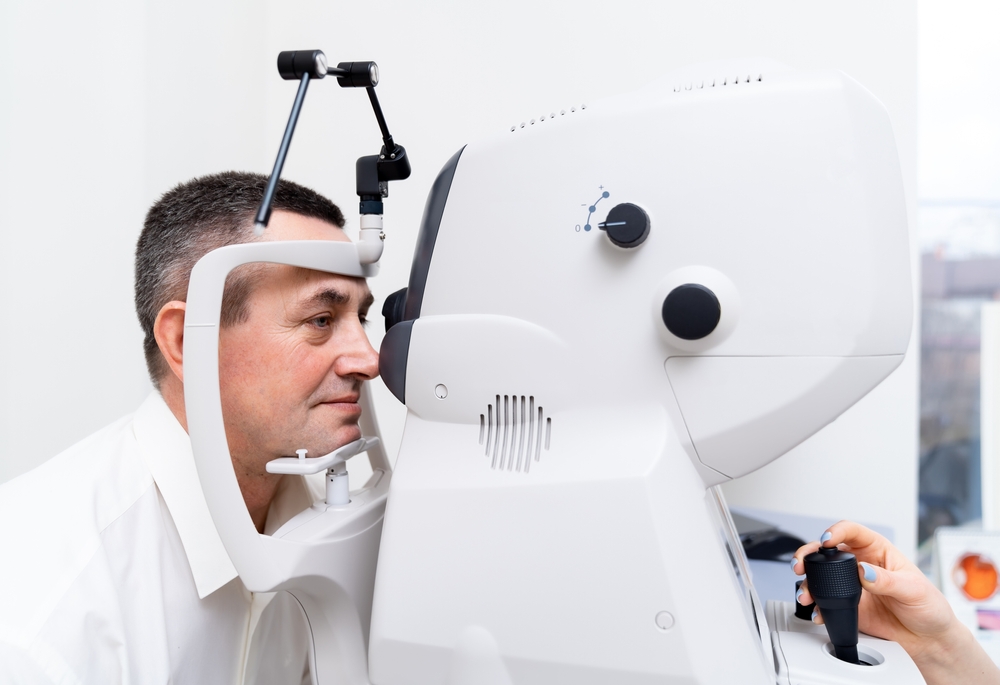
Many people need to rely on prescription eyewear to be able to see clearly. Although glasses remain the most popular choice, an increasing number of people are choosing to wear contact lenses either instead of glasses or as an alternative at times that suit them. The reason for this is that contact lenses offer patients much greater versatility and flexibility in their day-to-day lives. For example, there are certain sports that you can’t really participate in while wearing glasses, like wrestling, basketball, or baseball, and this is because not only is there a risk of damage to your glasses, but if you suffer a blow to the face, it could break could glass and cause trauma to your eyes. However, contact lenses are a good alternative for the vast majority of sports and other activities where glasses aren’t suitable.
If you’ve decided that you’d like to wear contact lenses either instead of or in addition to prescription glasses, you’ll first need to have a contact lens exam. This is because getting and wearing contacts is very different from conventional glasses.
Here’s what you need to know about what to expect at your first contact lens exam.
Determining Your Prescription
Your prescription for contact lenses will be very different from that for glasses. This is because while glasses sit a few centimeters in front of your eyes, contact lenses sit directly on the surface of the eyes, meaning that the power of the lens needed will be different. Determining your contact lens prescription is one of the first things that your eye doctor will do.
Assessment of the Curve of Your Cornea
Your cornea is the clear, domed lens that covers the front part of the eye and helps to protect it. However, the cornea is also responsible for refracting light as it enters the eye, focusing it through the natural lens and onto the retina to tell us what we can see. People who need prescription lenses have an abnormally-shaped cornea and this causes light to be refracted incorrectly.
Contact lenses sit over the top of the cornea. This means that it’s necessary to measure the shape and curvature of your cornea to ensure that you are wearing a contact lens that fits properly. A corneal curve assessment is done using something called a keratometer and is completely painless. Sometimes, patients are also referred for a scan of the surface of their cornea which is then used to create a 3D image. This is called topography and is valuable in detecting corneal abnormalities as well as assessing the shape of your cornea.
Pupil/Iris Size Measurement
Your eye doctor will want to measure the size of your pupil to make sure that your lenses will fit properly and be comfortable. This is usually done using a piece of equipment called a slit lamp which allows them to get a magnified view of your eye. It takes just a few minutes to do this, and it won’t cause you any discomfort. Occasionally, a handheld rule will be used instead.
Tear Film Evaluation
Our contact lenses float on a layer of the tear film and it’s this tear film that makes us able to move them around to ensure that they stay in the right position, as well as keeping them comfortable and making it possible for us to remove them. For you to be able to wear regular contact lenses, you’ll need to produce enough natural tear film. This is usually evaluated by placing tiny strips of paper into the corners of your eyes to see how quickly they moisten. Don’t worry. If you don’t produce enough tear film you may still be able to wear contact lenses, but you may need a specialty type that helps with drier eyes.
Your eye doctor will use the information obtained from these tests to help decide which contact lenses are likely to be best for you. You’ll be given a generic, non-prescription pair to try on to make sure that they fit comfortably and that you can insert and remove them ok. Once you and your eye doctor are happy, they can then be ordered in your prescription.
If you have any further questions about what to expect at your first contact lens exam, or to schedule an appointment, visit West Texas Eyecare in Fort Stockton. Call (432) 336-3662 today.






